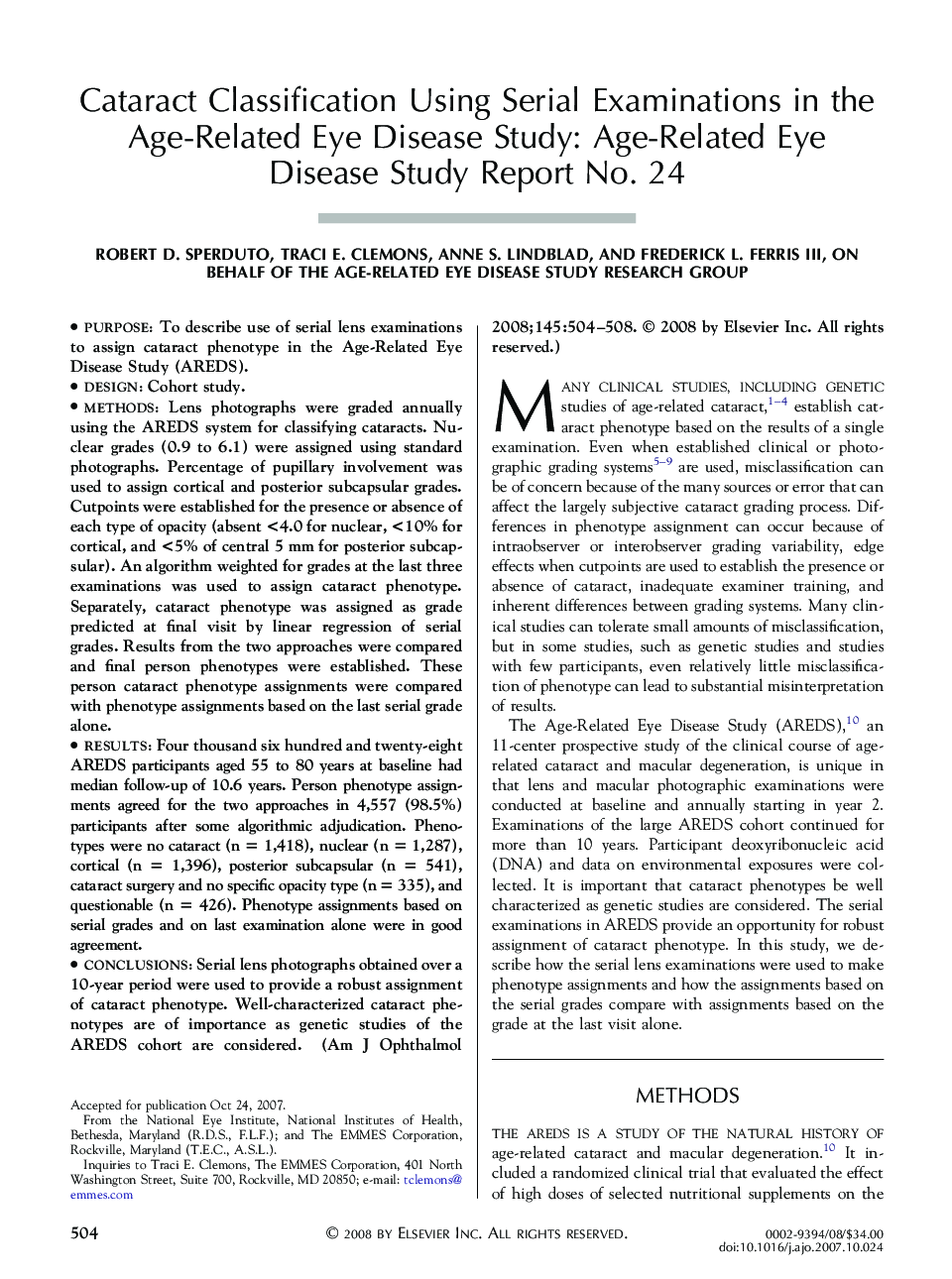| کد مقاله | کد نشریه | سال انتشار | مقاله انگلیسی | نسخه تمام متن |
|---|---|---|---|---|
| 4005164 | 1602211 | 2008 | 5 صفحه PDF | دانلود رایگان |

PurposeTo describe use of serial lens examinations to assign cataract phenotype in the Age-Related Eye Disease Study (AREDS).DesignCohort study.MethodsLens photographs were graded annually using the AREDS system for classifying cataracts. Nuclear grades (0.9 to 6.1) were assigned using standard photographs. Percentage of pupillary involvement was used to assign cortical and posterior subcapsular grades. Cutpoints were established for the presence or absence of each type of opacity (absent <4.0 for nuclear, <10% for cortical, and <5% of central 5 mm for posterior subcapsular). An algorithm weighted for grades at the last three examinations was used to assign cataract phenotype. Separately, cataract phenotype was assigned as grade predicted at final visit by linear regression of serial grades. Results from the two approaches were compared and final person phenotypes were established. These person cataract phenotype assignments were compared with phenotype assignments based on the last serial grade alone.ResultsFour thousand six hundred and twenty-eight AREDS participants aged 55 to 80 years at baseline had median follow-up of 10.6 years. Person phenotype assignments agreed for the two approaches in 4,557 (98.5%) participants after some algorithmic adjudication. Phenotypes were no cataract (n = 1,418), nuclear (n = 1,287), cortical (n = 1,396), posterior subcapsular (n = 541), cataract surgery and no specific opacity type (n = 335), and questionable (n = 426). Phenotype assignments based on serial grades and on last examination alone were in good agreement.ConclusionsSerial lens photographs obtained over a 10-year period were used to provide a robust assignment of cataract phenotype. Well-characterized cataract phenotypes are of importance as genetic studies of the AREDS cohort are considered.
Journal: American Journal of Ophthalmology - Volume 145, Issue 3, March 2008, Pages 504–508